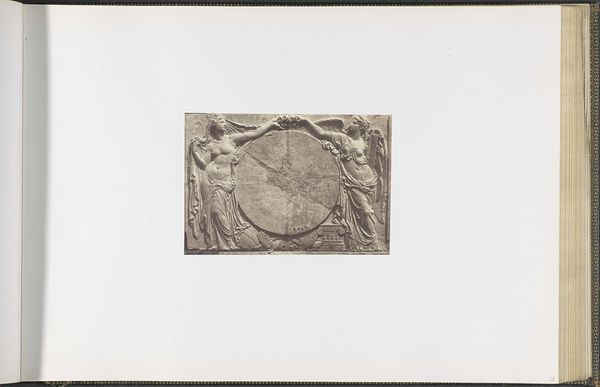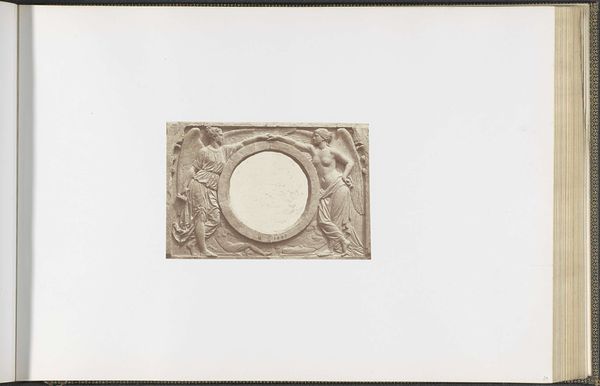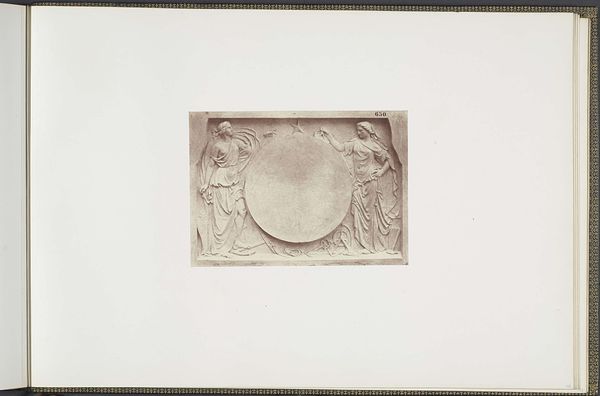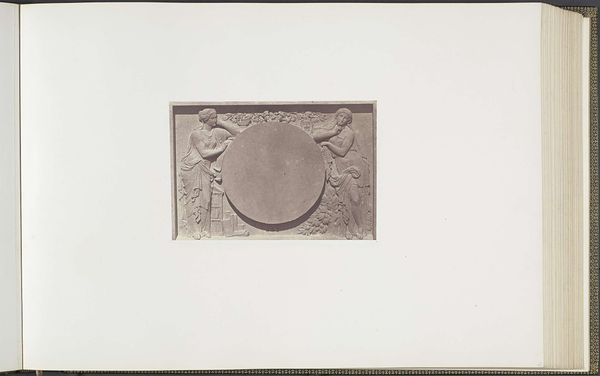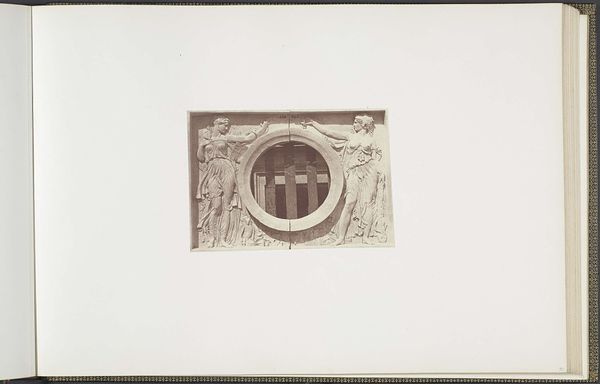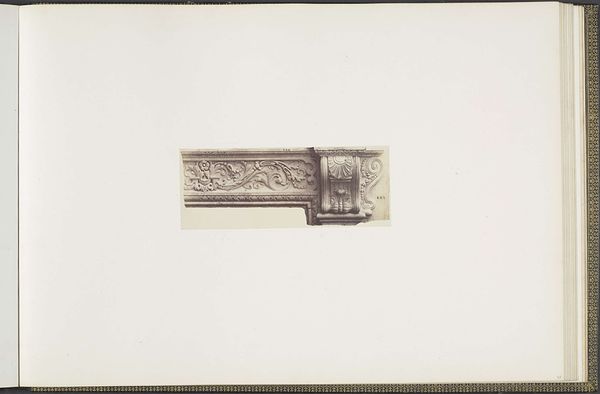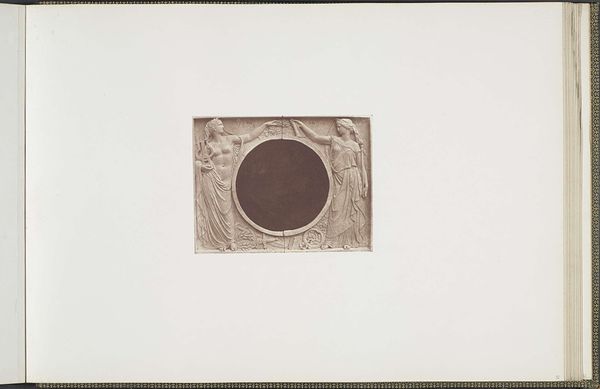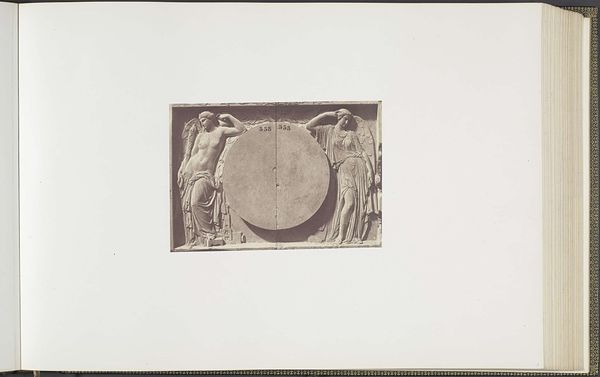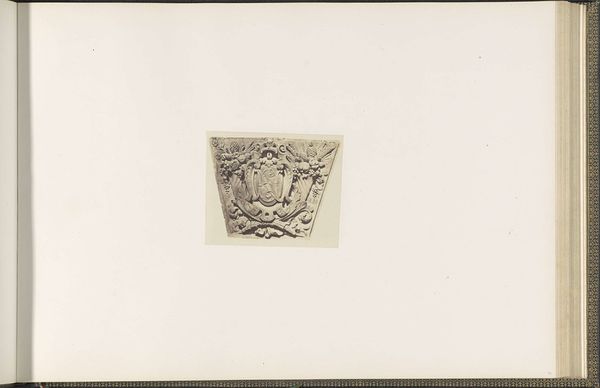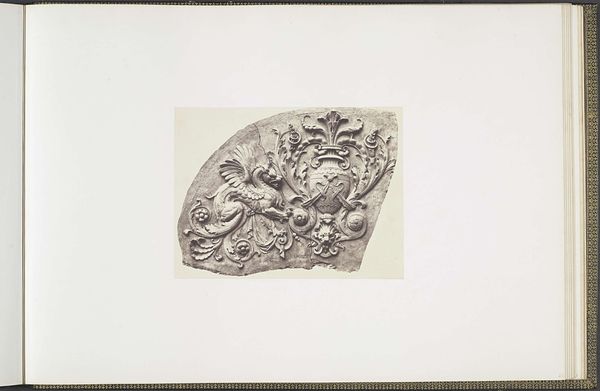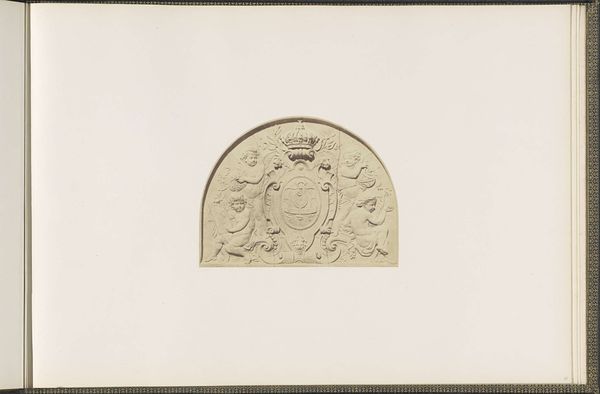
Gipsmodellen voor beeldhouwwerken op het Palais du Louvre: "La Peinture et la Sculpture" door Eugène Louis Lequesne c. 1855 - 1857
0:00
0:00
relief, photography, sculpture, plaster, gelatin-silver-print
#
neoclacissism
#
relief
#
figuration
#
photography
#
sculpture
#
plaster
#
gelatin-silver-print
Dimensions: height 382 mm, width 560 mm
Copyright: Rijks Museum: Open Domain
Edouard Baldus captured this image of Eugène Louis Lequesne's plaster models for sculptures at the Palais du Louvre. We see two winged female figures flanking a large, circular form. These figures, allegories of Painting and Sculpture, recall classical Greek sculpture. Winged figures often symbolize divine messengers. Here, they appear to be muses, bridging the terrestrial and the divine realms. The circle is an ancient symbol representing wholeness, eternity, and perfection. Its presence here could be understood as the embodiment of artistic creation itself, and a continuous cycle of inspiration. We see this motif of the winged figure throughout the history of art. Consider how the symbol of the angel, derived from classical antiquity, has been transmitted and adapted. It evolved through Christian art and iconography. These archetypes exert a powerful force, engaging our collective memory and subconscious associations. The symbols' emotional power lies in their ability to evoke a sense of timelessness. They appear, disappear, and resurface, evolving and taking on new meanings in different historical contexts.
Comments
No comments
Be the first to comment and join the conversation on the ultimate creative platform.
